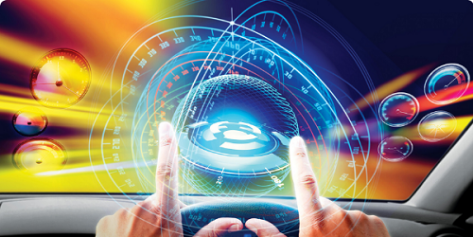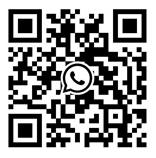
News Center
The sensor market is in strong demand, and the requirements for innovation and innovation continue to increase
- Categories:Industry information
- Time of issue:2017-04-07 17:12
(Summary description) Recently, researchers from Monash University in Australia have successfully solved the problems of bending and stretching functions of wearable sensors, which can be used in the field of biomedicine; four universities in the UK have led the development of a smart sensor system research to in-depth Research on sensor systems with higher intelligence and stability, and explore its future applications in smart cities, big data and autonomous driving; Swedish Fingerprint Card has successfully developed a fingerprint scanner that can be placed under the protective glass of mobile phones without special A new type of fingerprint sensor that can perform fingerprint identification with the Home button or other keystrokes. In recent years, sensors are in the development stage of transforming traditional sensors to new sensors. The characteristics of the new sensor are miniaturization, digitization, intelligence, multifunction, systemization, and networking. It not only promotes the transformation of traditional industries, but also leads to the establishment of new industries, which is a new economic growth point in the 21st century. Regardless of "Industry 4.0" or "Made in China 2025", in fact, the most essential change is intelligent production. In Gu Rongxiang's view, sensors are the key to the entire intelligentization. Because the core aspect of "Industry 4.0" and "Made in China 2025" is intelligent manufacturing. Regardless of networked or digitalized, the front-end will be intelligent, but all of these will be inseparable from sensors. As a high-tech industry recognized at home and abroad with a promising future, the sensor industry has attracted worldwide attention for its high technical content, good economic benefits, strong penetration capability, and broad market prospects. From 2007 to 2014, my country's sensor industry has achieved better development, and the total industrial output value of the industry is on the rise, and its share of GDP remains between 0.10% and 0.15%. Under the guidance and support of a series of policies that the country vigorously strengthens the development and application of sensors, my country's sensor industry is facing a good development prospect, and there is a promising future for growth. Sensors are closely related to the security industry. As part of the development of the Internet of Things industry, many products in the security industry require sensors to achieve functions. The development of the Internet of Things security has further increased the demand for sensors. According to the Lux Research Report, the proliferation of mobile devices, the increasing popularity of wearable devices and the emergence of connected IoT have pushed the expected demand for sensors to one trillion yuan. Should meet unmet needs in terms of power consumption, sensitivity, form factor and cost. IDC believes that the output value of sensors and functional modules will reach 32% of the entire industry. This will promote the maturity of specialized IoT platforms, software, and cloud services. The competition of the Internet of Things is actually the competition of components, because components with excellent performance are the prerequisite for making "explosive products" in the new era. From the perspective of the attributes of IoT products, the most basic component competition is implemented in sensing and energy consumption. Only when we can better perceive the outside world and the product's battery life is long enough, the Internet of Everything is meaningful. My country's sensor industry has shown rapid growth in recent years. For example, the production capacity of photosensitive sensors reached 450 million in 2014, and the market demand reached 250 million. The data shows that the market development prospects of photosensitive sensors are good. It is understood that photosensitive sensors are widely used in information, machinery, home appliances and other fields. The main products are light detectors, photoelectric sensors, CCD image sensors, optical fiber sensors, etc. With the expansion of the sensor market, flow sensors, pressure sensors, and temperature sensors occupy 21%, 19%, and 14% of the market respectively, which has accelerated the development of sensors. With the development of intelligence, the future sensor market will develop towards emerging sensors such as wireless sensors, micro-system sensors, and biosensors. The leader of the Ministry of Industry and Information Technology stated that it is necessary to promote the core technological breakthroughs in the development of the Internet of Things, promote the innovative development of sensors and chip technology, transmission technology, and information processing technology, gradually improve the Internet of Things standard system, and actively promote the internationalization of independent technical standards; At the same time, accelerate the deepening application of the Inte
The sensor market is in strong demand, and the requirements for innovation and innovation continue to increase
(Summary description) Recently, researchers from Monash University in Australia have successfully solved the problems of bending and stretching functions of wearable sensors, which can be used in the field of biomedicine; four universities in the UK have led the development of a smart sensor system research to in-depth Research on sensor systems with higher intelligence and stability, and explore its future applications in smart cities, big data and autonomous driving; Swedish Fingerprint Card has successfully developed a fingerprint scanner that can be placed under the protective glass of mobile phones without special A new type of fingerprint sensor that can perform fingerprint identification with the Home button or other keystrokes.
In recent years, sensors are in the development stage of transforming traditional sensors to new sensors. The characteristics of the new sensor are miniaturization, digitization, intelligence, multifunction, systemization, and networking. It not only promotes the transformation of traditional industries, but also leads to the establishment of new industries, which is a new economic growth point in the 21st century.
Regardless of "Industry 4.0" or "Made in China 2025", in fact, the most essential change is intelligent production. In Gu Rongxiang's view, sensors are the key to the entire intelligentization. Because the core aspect of "Industry 4.0" and "Made in China 2025" is intelligent manufacturing. Regardless of networked or digitalized, the front-end will be intelligent, but all of these will be inseparable from sensors.
As a high-tech industry recognized at home and abroad with a promising future, the sensor industry has attracted worldwide attention for its high technical content, good economic benefits, strong penetration capability, and broad market prospects. From 2007 to 2014, my country's sensor industry has achieved better development, and the total industrial output value of the industry is on the rise, and its share of GDP remains between 0.10% and 0.15%. Under the guidance and support of a series of policies that the country vigorously strengthens the development and application of sensors, my country's sensor industry is facing a good development prospect, and there is a promising future for growth.
Sensors are closely related to the security industry. As part of the development of the Internet of Things industry, many products in the security industry require sensors to achieve functions. The development of the Internet of Things security has further increased the demand for sensors.
According to the Lux Research Report, the proliferation of mobile devices, the increasing popularity of wearable devices and the emergence of connected IoT have pushed the expected demand for sensors to one trillion yuan. Should meet unmet needs in terms of power consumption, sensitivity, form factor and cost. IDC believes that the output value of sensors and functional modules will reach 32% of the entire industry. This will promote the maturity of specialized IoT platforms, software, and cloud services.
The competition of the Internet of Things is actually the competition of components, because components with excellent performance are the prerequisite for making "explosive products" in the new era. From the perspective of the attributes of IoT products, the most basic component competition is implemented in sensing and energy consumption. Only when we can better perceive the outside world and the product's battery life is long enough, the Internet of Everything is meaningful.
My country's sensor industry has shown rapid growth in recent years. For example, the production capacity of photosensitive sensors reached 450 million in 2014, and the market demand reached 250 million. The data shows that the market development prospects of photosensitive sensors are good. It is understood that photosensitive sensors are widely used in information, machinery, home appliances and other fields. The main products are light detectors, photoelectric sensors, CCD image sensors, optical fiber sensors, etc.
With the expansion of the sensor market, flow sensors, pressure sensors, and temperature sensors occupy 21%, 19%, and 14% of the market respectively, which has accelerated the development of sensors. With the development of intelligence, the future sensor market will develop towards emerging sensors such as wireless sensors, micro-system sensors, and biosensors.
The leader of the Ministry of Industry and Information Technology stated that it is necessary to promote the core technological breakthroughs in the development of the Internet of Things, promote the innovative development of sensors and chip technology, transmission technology, and information processing technology, gradually improve the Internet of Things standard system, and actively promote the internationalization of independent technical standards; At the same time, accelerate the deepening application of the Inte
- Categories:Industry information
- Time of issue:2017-04-07 17:12


Top Ranking
RECOMMEND NEWS
Top Ranking
RECOMMEND NEWS
ONLINE MESSAGE
WRITE A MESSAGE TO US
v
Contact us
Tel:
+86 731-86171990
Email:
sales@firstratesensor.com
Address: 4th Floor, Building 1, Zhitingyuan, Zhenhua Road, Yuhua District, Changsha City, Hunan Province,China.







